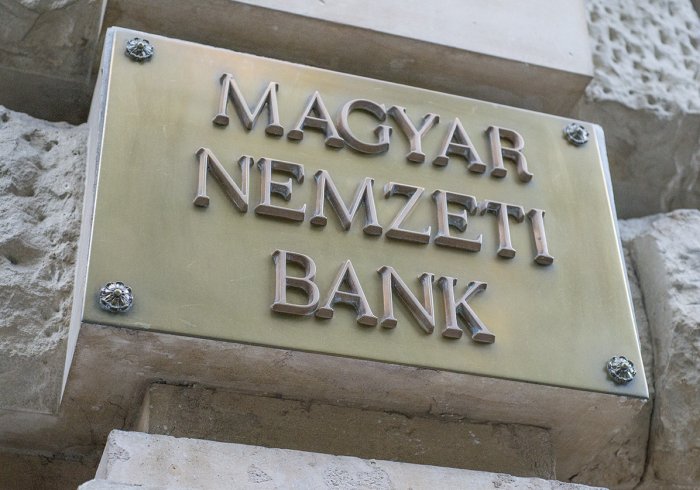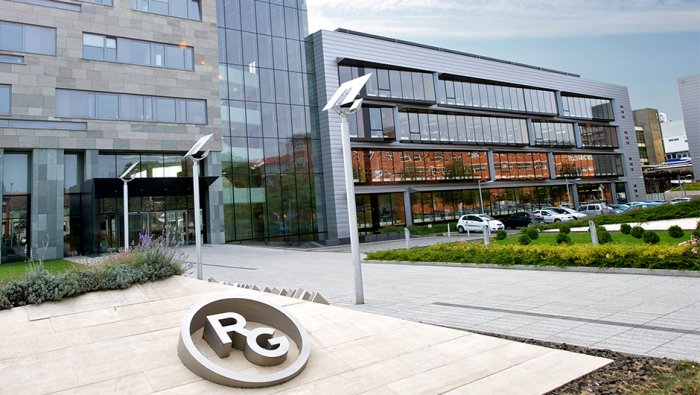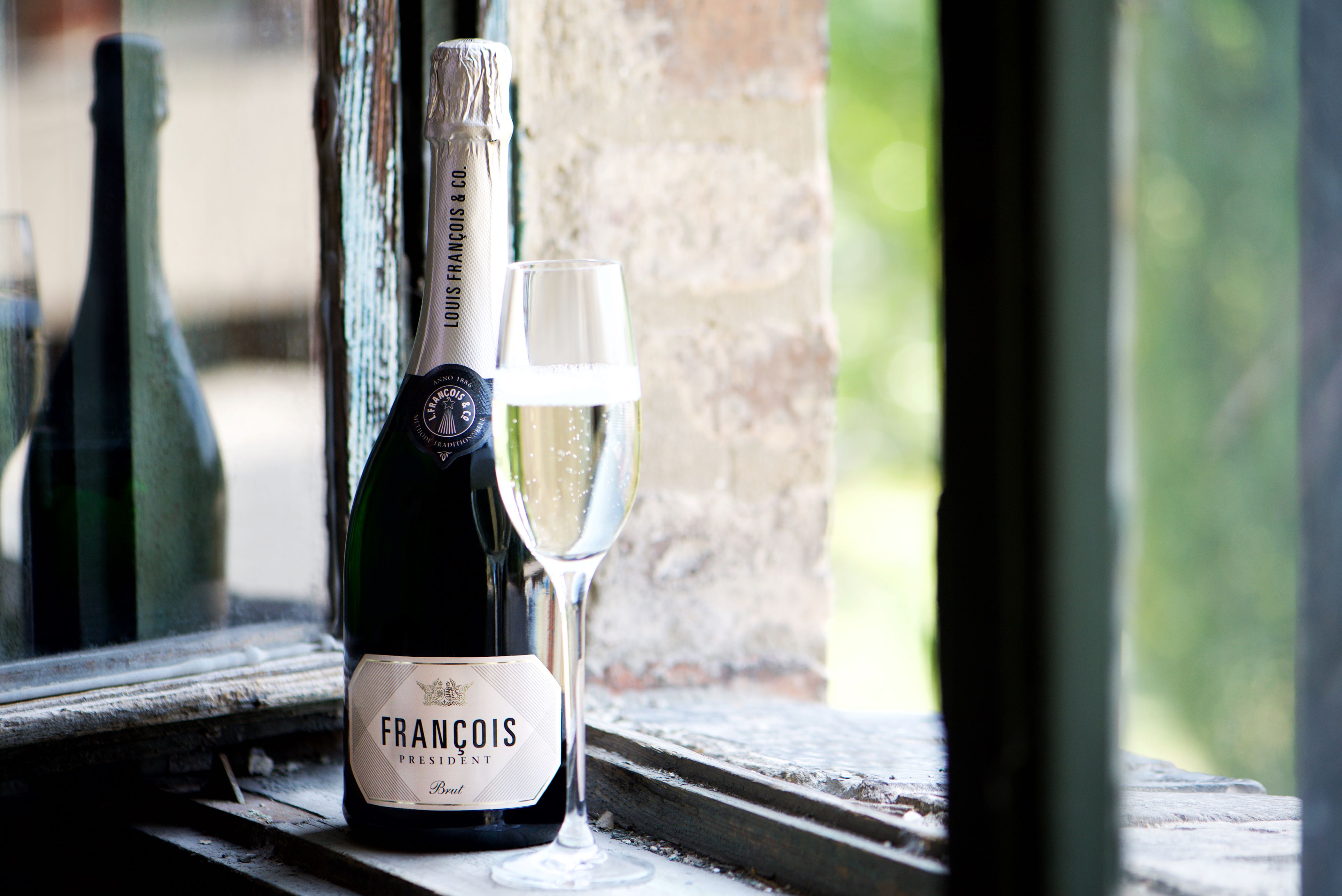Kadarka on the day of the Kokárda
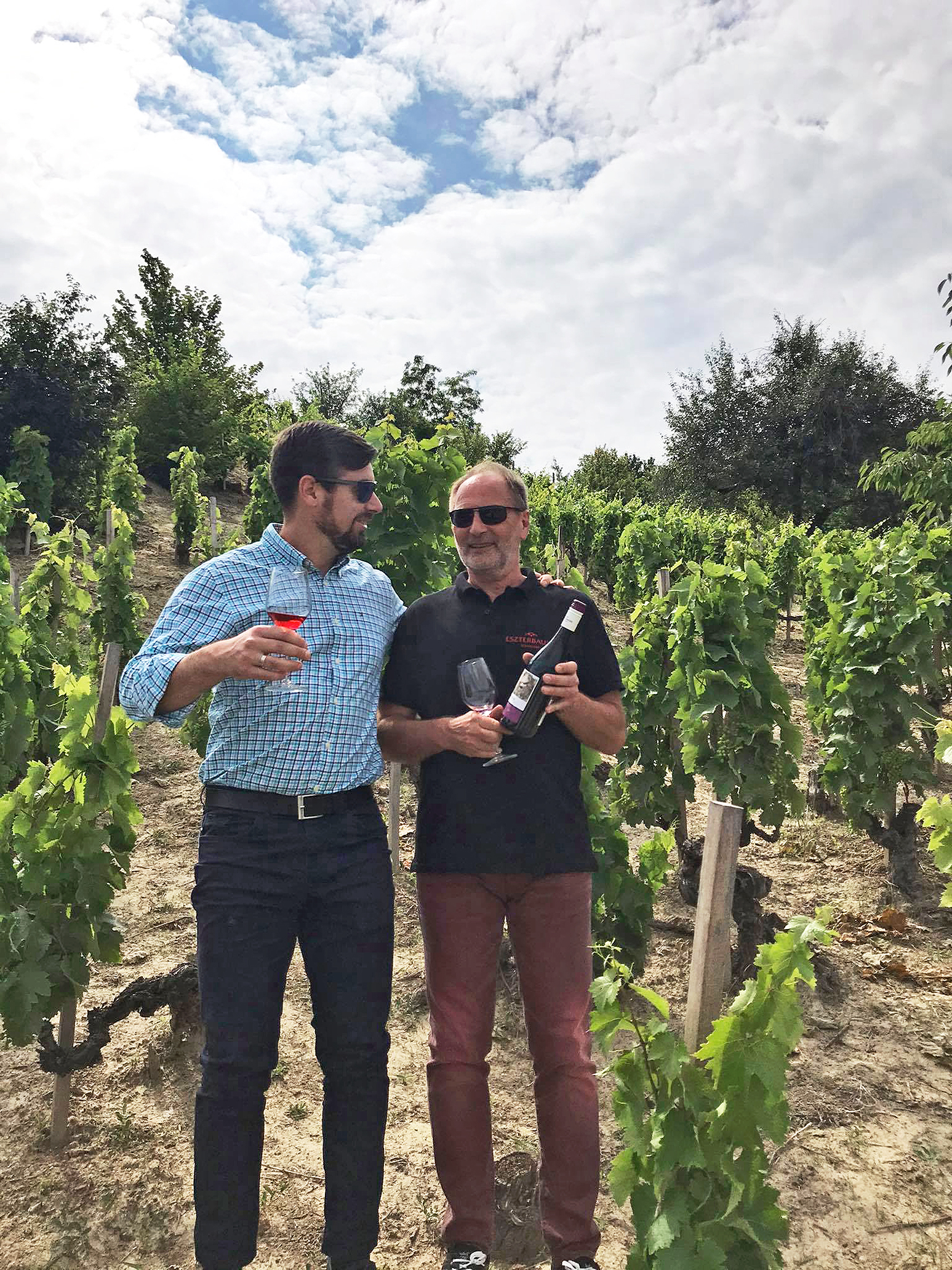
Miklós Klein (in lighter colored shirt), the Eszterbauer winemaker, and winery owner János Eszterbauer.
I will admit to having got the words Kadarka and Kokárda mixed up once or twice as I got to grips with Hungarian vocabulary. While the former is a grape variety and the latter the rosette of ribbons in the colors the Hungarian flag that can be seen pinned to the jackets of patriots on the March 15 holiday, Kadarka could be the ideal red wine with which to celebrate the 1848 revolution.
This is not only because Hungary’s other main indigenous black grape, Kékfrankos, can be considered as much an Austrian grape as a Hungarian one (without wanting to get at all political), even though Blaufränkisch (to use its Austrian moniker) is predominantly planted in Burgenland, which was formerly part of Hungary.
It is also because Kadarka is light, playful, spicy and sometimes floral, and also delicious with paprika-infused fare that might be part of the festivities, as well being a superb red wine for spring.
I am not the first to connect Kadarka with the March 15 holiday, however. Two years ago, on March 15, Dániel Kezdy (the man behind the epic Furmint February tasting that is usually held in Budapest, but not this year due to COVID) launched a new campaign to promote Kadarka as the Szabadság Bora (The Wine of Freedom).
The current lockdown measures mean he will not be holding any Kadarka-related tastings at his Kálvária Pince, in Budakalász, this March 15, but he does urge people to open a bottle of Kadarka and enjoy the Wine of Freedom in the comfort of their own home.
There was a bit of Kadarka action to be had, however, at a recent tasting of the Bormedence Borklub, which showed that Hungarian vintners are beginning to get a handle on the tangy yet temperamental grape, with the wines overall showing good, even surprising consistency.
Fragile and Tricky
It is a fragile and tricky grape to cultivate and is prone to uneven ripening. It is thin-skinned (hence its light tannins), but also a late-ripener, making it at risk from rot. Nevertheless, it can make the kind of light but complex wines that consumers are starting to crave, in place of fuller-bodied blockbusters.
After years of being predominantly either underwhelming (too watery and slight) or overwhelming (too much oak and extraction), plenty of delicious Kadarka wines with light tannins and playful acidity are coming through that typically exude a distinctively aromatic rose hip/red fruit scent with delicious spiciness.
Szekszárd is the Hungarian epicenter of the Kadarka grape (essentially the same variety as Bulgaria’s Gamza), which came to Hungary from the Balkans, supposedly brought by Rascians from present-day Serbia, who were fleeing Ottoman invaders.
In Szekszárd, the grape variety somehow survived the communist cull, but it was pretty much eradicated from Eger’s vineyards, where it was once the dominant variety, as more productive, higher-yielding grapes were sought in its place.
However, a welcome trend now is the re-emergence of the grape in Eger, as vintners look to make single varietal wines, as well as spice up their Bikavér, which is dominated by Kékfrankos. Just a few percent of the aromatic Kadarka grapes are needed; that addition has long been a must in Szekszárd, but can now increasingly be found in Eger also.
From Eger, Ferenc Tóth’s Kadarka 2017 (HUF 3,370 from Borkereskedes.hu) claimed third place at the Bormedence tasting and had a pleasant tawny color suggesting a bit of age, which it wore well with complex notes of mushroom and leaves.
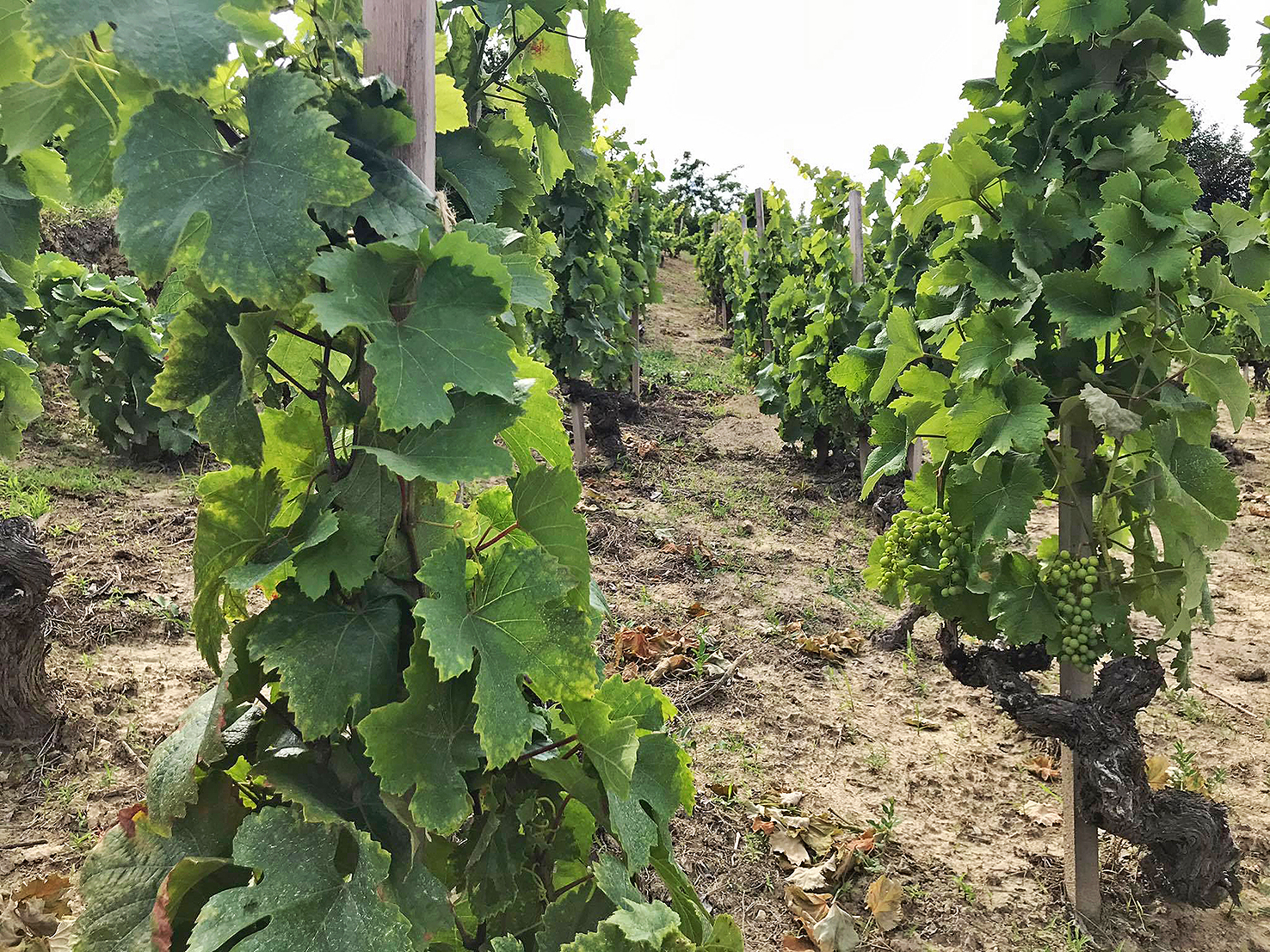
Eszterbauer has a plot of Kadarka vines that were planted in 1912 as bush vines (not trained along wire, relatively unusual in Hungary).
Aging Well
Some bottle age appears to suit the variety. The joint-winners were both a year older still: Pál Mészáros’ St. Grál Mészi Kadarka Reserve 2016 (HUF 6,000 from Selection.hu) from Szekszárd with very appealing rosehip, hibiscus and floral aromas with the promise followed up on the long palate; and Balla Sziklabor Kadarka 2016 (HUF 7,350 from Bortársaság) from rocky slopes in the Ménesi wine region, near the city of Arad, in present-day Romania.
The latter was deliciously exotic, concentrated and quite oaky, having been aged in small barrels, which for me somewhat hid Kadarka’s varietal character, although the grape variety over there has most likely evolved to become quite different to what we consider Kadarka over here.
The Best Buy wine from the Bormedence tasting, Koch Borászat’s Kadarka 2018, made by Csaba Koch, the Hungarian Wine Academy’s Winemaker of the Year for 2019, is currently on sale at a remarkable HUF 1,350 from Pannonborbolt.hu.
Beyond the tasting, János Németh Kadarka 2018, which is the 2020 Országház bora (Hungarian Parliament wine) in the Kadarka category, really ticks all of the key boxes, with that tasty spiciness, crispy cranberry and rosehip with a delightful lightness of touch on the palate.
It comes from the fruit of nine new clones of Kadarka. Németh explained that the classic P9 clone makes spicy wines, but its compact bunches can be too tight and make it highly susceptible to disease, meaning that good wine can only be made in very good, disease-free vintages.
The clones that Németh works with have looser bunches. This wine costs HUF 3,350 from wineloverswebshop.hu. As Országház bora, it is supposed to be served to visiting foreign leaders and dignitaries, though due to the current circumstances it probably means they’ll have plenty of bottles to lay down and gain further complexity.
The Heimann winery, also from Szekszárd, has done a lot of work with Kadarka clones, while Eszterbauer has a plot of Kadarka vines that were planted in 1912 as bush vines (not trained), which János Eszterbauer, who dropped in on the Bormedence tasting via internet linkup, says comprises some 30-40 clones.
The resulting wine from the 2019 vintage, 108 éves kadarka 2019, is really elegant and featherlight, yet full of many of the aforementioned characteristic Kadarka flavors. It costs HUF 6,490 from Eszterbauer.hu, and is also available from Borfalu.
This article was first published in the Budapest Business Journal print issue of March 12, 2021.
SUPPORT THE BUDAPEST BUSINESS JOURNAL
Producing journalism that is worthy of the name is a costly business. For 27 years, the publishers, editors and reporters of the Budapest Business Journal have striven to bring you business news that works, information that you can trust, that is factual, accurate and presented without fear or favor.
Newspaper organizations across the globe have struggled to find a business model that allows them to continue to excel, without compromising their ability to perform. Most recently, some have experimented with the idea of involving their most important stakeholders, their readers.
We would like to offer that same opportunity to our readers. We would like to invite you to help us deliver the quality business journalism you require. Hit our Support the BBJ button and you can choose the how much and how often you send us your contributions.

